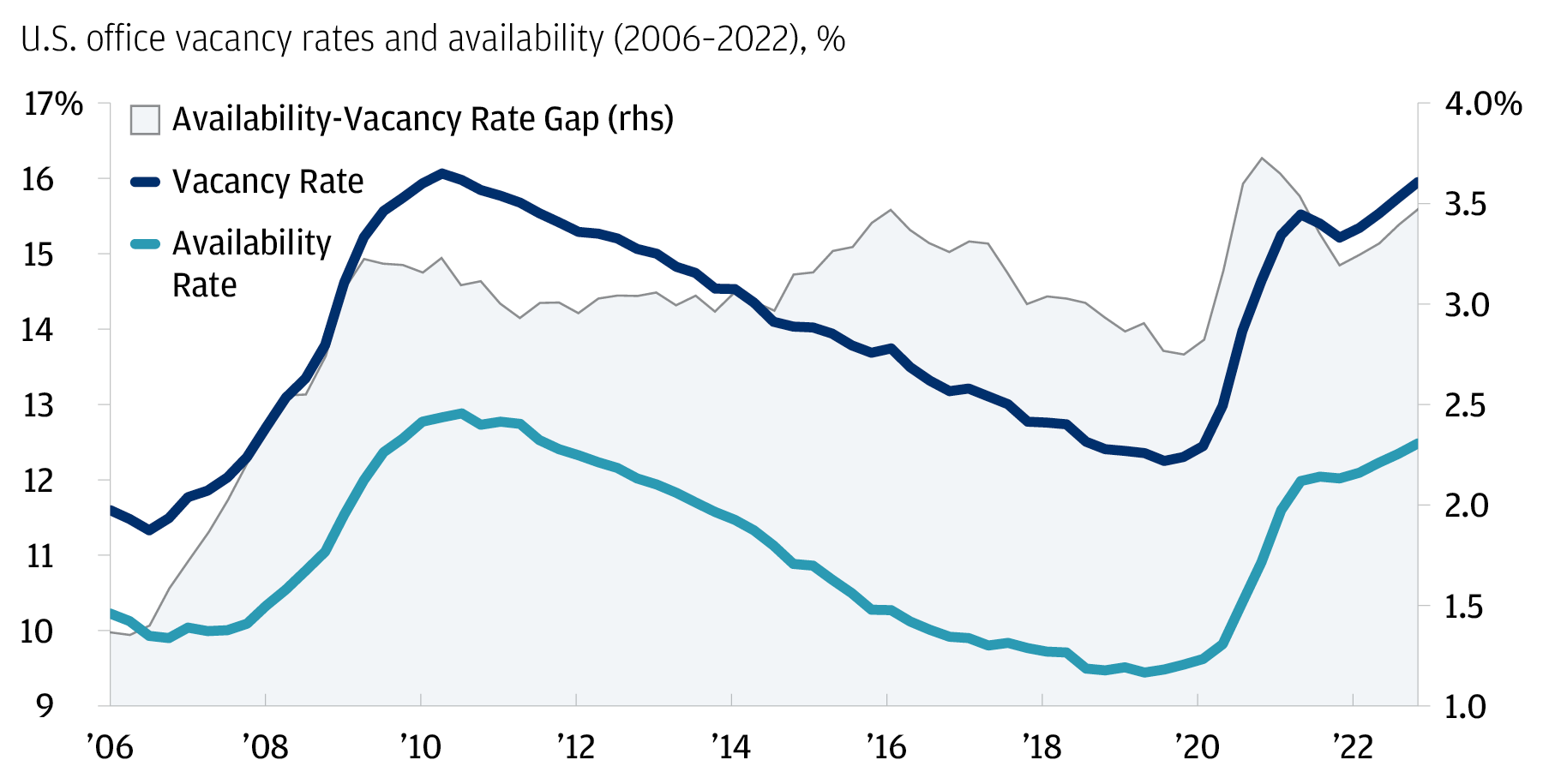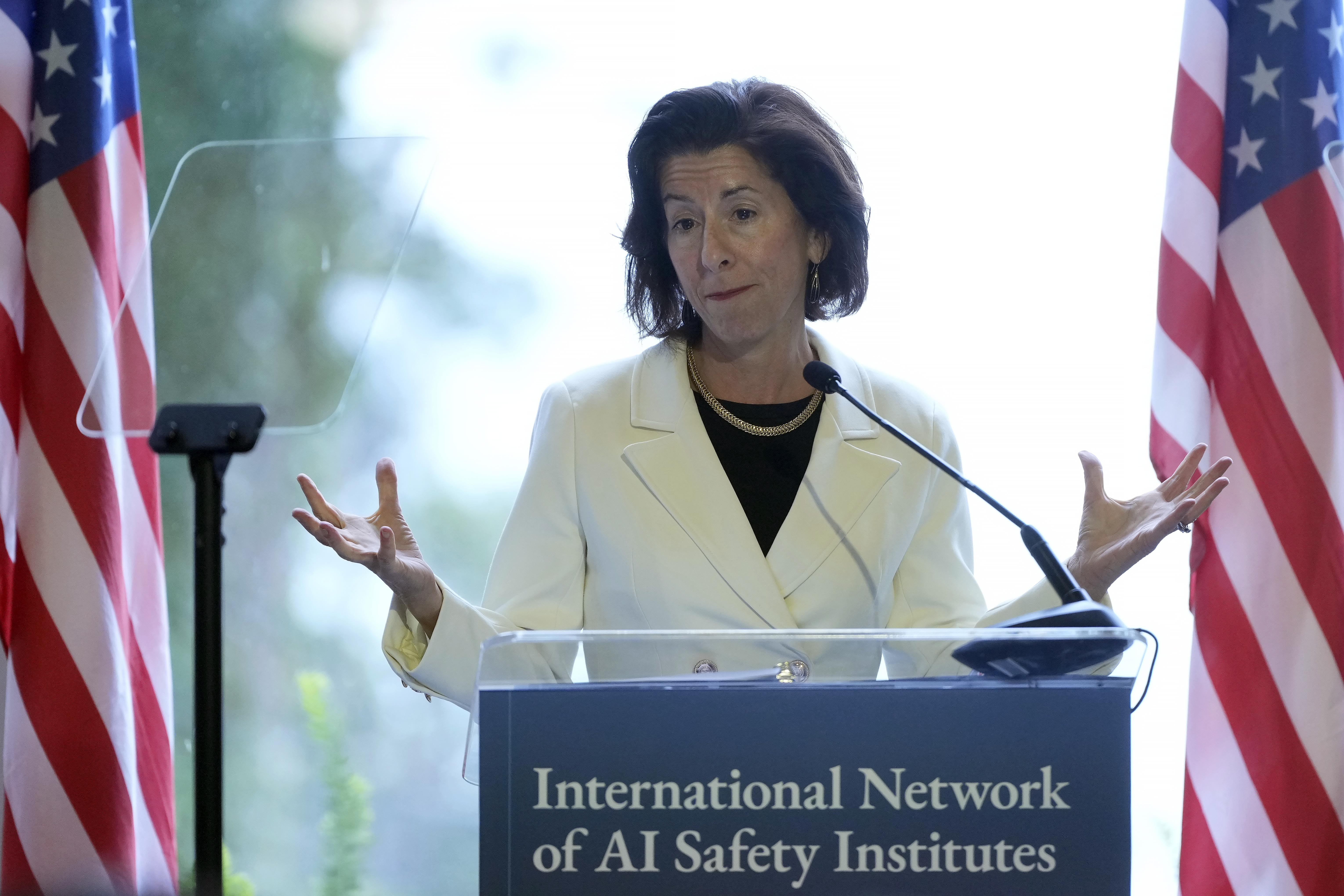The looming commercial real estate crisis is raising eyebrows across the financial landscape as high office vacancy rates continue to plague major U.S. cities, leading to record lows in property values. The ripple effects of this downturn are not just localized; they threaten to impact the broader economy, especially in light of a wave of real estate loans maturing by 2025. Experts are particularly concerned about how these challenges could coalesce with mounting bank failures and the elevated interest rates that remain a critical barrier to recovery. As diminished demand for office space persists following the pandemic, financial analysts warn that the potential for widespread delinquency among these commercial loans could exacerbate the situation. In this precarious environment, the economic impact extends beyond real estate investors, potentially affecting jobs, lending practices, and consumer spending across the United States.
As we delve into the unfolding situation in commercial real estate, or the corporate property sector, it’s evident that a confluence of factors is creating a perfect storm for disarray in this arena. The rise in office space vacancies, exacerbated by changing work dynamics due to the pandemic, has left many urban centers grappling with abandoned buildings and declining property values. This scenario is compounded by the looming deadline of real estate loans coming due, alongside the backdrop of a turbulent banking environment, which raises concerns regarding possible financial instability. With recent bank failures still fresh in memory, the links between over-leveraged real estate investments and shifts in economic conditions highlight a precarious future. It’s essential to understand how these interrelated factors shape the landscape of this crisis and what it could mean for the future of commercial property markets.
Understanding the Commercial Real Estate Crisis
The commercial real estate crisis has emerged as a significant concern among economists and financial experts, particularly due to the challenges posed by soaring office vacancy rates in major urban centers. According to recent analyses, office buildings in cities like Boston are experiencing vacancy rates as high as 23%. The causes behind this downfall stem heavily from shifts in work patterns following the pandemic, where many businesses are opting for remote or hybrid work models, further depressing demand for commercial properties. This situation has led to substantial drops in property values, compelling investors to reconsider their strategies in this sector.
As the financial landscape continues to evolve, the potential impacts of this crisis extend beyond individual investors to the banking sector at large. With approximately 20% of $4.7 trillion in commercial mortgage debt maturing soon, lenders are bracing for potential defaults. Experts warn that if delinquency rates rise significantly, it could lead to a ripple effect throughout the economy, echoing concerns from past financial crises. However, the prevailing belief is that while the commercial real estate sector is indeed facing a crisis, it’s unlikely to precipitate a broader financial meltdown akin to what was witnessed in 2008.
Impact of Bank Failures on Commercial Real Estate
The recent surge in bank failures, particularly among regional banks, raises significant alarms regarding the stability of commercial real estate. Many of these smaller institutions have invested heavily in real estate loans, placing them at a greater risk of losses as buildings decrease in value. If these banks become insolvent due to mounting delinquencies on their commercial loans, the repercussions could extend well beyond their balance sheets, potentially tightening lending across the entire economy. Increased caution among lenders could lead to reduced credit availability, impacting businesses that rely on loans for growth.
Moreover, the interconnected nature of financial institutions means that issues within regional banks could spark a confidence crisis among larger banks if not managed judiciously. As some analysts note, while major banks are likely well-prepared to handle vulnerabilities owing to diversified portfolios, any ripple from the regional banking sector could disrupt the entire lending atmosphere. Therefore, the easing of interest rates becomes critical; without a strategic approach to managing these debts, the commercial real estate sector might face additional barriers to recovery.
The Role of Interest Rates in the Market
Interest rates play a pivotal role in shaping the current landscape of commercial real estate. With the Federal Reserve maintaining higher rates, many investors are now grappling with the financial burden of loans taken during periods of lower rates. As property values decline, refinanced loans at higher interest levels become unaffordable, leading to increased delinquency rates among commercial real estate loans. This scenario exacerbates fears around bank stability and the overall health of the economy.
In light of these dynamics, the cautionary phrase “Stay alive till ’25” has emerged among investors who are banking on a drop in long-term interest rates for refinancing relief. However, experts predict that rates may not see a significant decrease in the coming years, potentially continuing to strain the commercial real estate market. A substantial dip in interest rates could offer some reprieve, but until then, the sector is likely to face continued challenges as it struggles to adapt to a new financial environment.
Economic Impact of High Office Vacancy Rates
The economic implications of high office vacancy rates are profound, affecting not just property owners but also the wider community. With many commercial spaces lying empty, municipalities face declining property tax revenues, which can result in budget constraints for public services and infrastructure. Consequently, as cities lose revenue from unoccupied properties, they may struggle with maintaining essential services, leading to a deterioration of urban environments that can further discourage business investment.
Additionally, high vacancy rates yield direct consequences for local businesses, particularly those reliant on foot traffic generated by office workers. Retail stores, restaurants, and service providers in business districts are at risk of dwindling customer bases, resulting in lower sales and potential layoffs. This cyclical effect highlights the interconnectedness of commercial real estate health and overall economic vitality, urging stakeholders to address the looming crisis strategically.
The Future of Commercial Real Estate Investments
As the commercial real estate market confronts its current challenges, investors must navigate an increasingly complex terrain marked by high vacancy rates and uncertain future returns. Adaptation strategies such as repurposing underutilized office spaces or enhancing property amenities might be crucial in attracting tenants in a post-pandemic world. For instance, properties designed with modern health standards and amenities can set themselves apart in a competitive market, appealing to businesses looking for attractive spaces that encourage returning employees.
Furthermore, investors are also considering diversifying their portfolios to mitigate risks associated with the commercial real estate sector. This might involve investing in alternative asset classes, such as industrial properties or logistics centers, which are experiencing heightened demand due to the rise of e-commerce. By broadening their investment landscapes, stakeholders can stabilize returns and foster resilience within their portfolios amid the uncertainty currently enveloping commercial real estate.
Real Estate Loans: Risks and Opportunities
The current climate of rising interest rates brings both risks and opportunities for real estate loans. While many investors face potential defaults regarding their commercial mortgages, there are also opportunities for savvy investors to acquire undervalued properties. With some buildings selling for significantly less than their original prices, the possibility for lucrative investments exists for those willing to navigate the complexities of the market amid an ongoing crisis.
Moreover, the maturing of substantial amounts of real estate loans presents a critical juncture in the market. Investors may find themselves facing a tightening credit environment, but those with solid capital positions may seize the opportunity to invest in distressed assets at favorable prices. Adopting a proactive strategy to manage loans and maintain liquidity will be key for investors as they work to capitalize on opportunities while mitigating risks associated with increased default rates.
Borrowing Strategies Amid Economic Uncertainty
In light of economic uncertainty, it is critical for investors to adopt prudent borrowing strategies in the commercial real estate sector. As traditional lending avenues become increasingly cautious, exploring alternative financing options may become essential. Options such as private equity investments or partnerships could offer additional liquidity and support for those looking to acquire new properties or refinance existing loans without succumbing to high-interest rates.
Furthermore, negotiating flexible terms with lenders can provide a buffer against rising rates and potential downturns. Investors who proactively engage with their lenders to establish favorable terms may be better positioned to weather an economic storm while continuing their operations effectively. As strategies become increasingly important in this evolving landscape, being informed and adaptable is crucial for success.
Consumer Considerations in the Commercial Sector
Consumers are also impacted by the turbulence within the commercial real estate sector, particularly as regional banks face challenges. A contraction in lending resulting from bank failures can lead to tighter credit conditions impacting consumer loans and overall economic activity. As banks recalibrate their risk assessments, consumers may find it more challenging to secure financing for both personal and business needs, which could hinder economic growth.
Consumer confidence is intricately linked to the health of the commercial sector. As potential downturns unfold in commercial real estate, consumers may exhibit caution in their spending behaviors, opting to save rather than invest in new purchases. Growing anxiety centered around job stability and financial security can further dampen consumer sentiment, prompting a need for stakeholders to address the ripple effects as the commercial real estate market navigates its current turmoil.
Mitigating the Crisis: Collaborative Approaches
Addressing the ongoing commercial real estate crisis necessitates a collaborative approach among stakeholders—including government agencies, financial institutions, and property owners. Developing strategic policies that incentivize investment in underperforming properties may help stabilize parts of the market and prevent cascading failures from regional institutions. For instance, tax breaks or improved zoning laws for converting unused office space into affordable housing might stimulate growth and recovery in otherwise stagnant areas.
Moreover, engaging open dialogues among stakeholders can facilitate innovative solutions aimed at revitalizing the commercial sector. Workshops, forums, and roundtable discussions can lead to a more tailored response to meet the unique needs of various communities. By fostering collaborative relationships and proactive measures, stakeholders can work jointly to mitigate the risks posed by the commercial real estate crisis and steer the market toward recovery.
Frequently Asked Questions
What is the current state of the commercial real estate crisis in relation to bank failures?
The commercial real estate crisis is raising concerns about potential bank failures due to upcoming delinquencies on real estate loans. As a substantial amount of commercial mortgage debt, about 20% of the $4.7 trillion total, is coming due this year, regional banks heavily invested in these loans may face significant losses. While some experts expect a few smaller banks to struggle, the likelihood of a widespread banking meltdown remains low.
How do high office vacancy rates affect the commercial real estate crisis?
High office vacancy rates significantly contribute to the commercial real estate crisis. In major U.S. cities, vacancy rates range from 12% to 23%, leading to depressed property values and increased risk for lenders. This downturn in demand, exacerbated by the pandemic and a shift towards remote work, places substantial financial pressure on businesses and regional banks with large exposures in commercial real estate.
What economic impact can be anticipated from the commercial real estate crisis?
The economic impact of the commercial real estate crisis could manifest as reduced consumer spending and stricter lending terms, particularly if regional banks incur significant losses from real estate loans. However, the broader economy remains buoyant due to a stable job market and thriving stock market, which may mitigate the effects of this crisis on overall economic health.
Are rising interest rates contributing to the commercial real estate crisis?
Yes, rising interest rates are a major factor in the commercial real estate crisis. When interest rates were low, many investors over-leveraged their investments, assuming that low rates would persist. The recent spike in interest rates has led to higher borrowing costs, decreased demand for office space, and has put additional strain on the commercial real estate market, resulting in potential defaults on real estate loans.
What might happen if a wave of commercial real estate loans defaults occur?
If a wave of defaults on commercial real estate loans occurs, regional banks could face serious challenges, leading to potential failures in that sector. This scenario could ripple through the economy, causing tighter credit conditions and reduced consumer confidence. However, larger banks are better positioned to weather such defaults due to their diverse income sources and stricter regulatory oversight.
Can the commercial real estate crisis lead to a financial collapse similar to that of 2008?
While the commercial real estate crisis poses significant risks, experts suggest it is unlikely to result in a financial collapse like that of 2008. The banking sector has undergone stringent regulations since then, providing a buffer against potential failures. However, if the economy enters a recession, the situation could worsen, amplifying the crisis and possibly leading to greater economic ramifications.
What strategies could help mitigate the commercial real estate crisis?
To mitigate the commercial real estate crisis, a substantial drop in long-term interest rates would be beneficial, as it could facilitate refinancing of existing loans. Additionally, strategic adjustments within the commercial real estate sector, such as repurposing vacant properties and enhancing building amenities, might help stabilize the market in the face of these financial challenges.
What are the long-term implications of the commercial real estate crisis on the banking system?
The long-term implications of the commercial real estate crisis on the banking system may include tighter lending standards and potential insolvencies among weaker regional banks. If significant losses accumulate due to a wave of delinquencies on real estate loans, it could lead to more cautious lending practices, impacting economic growth and recovery.
| Key Point | Details |
|---|---|
| Current Office Vacancy Rates | High vacancy rates in major cities (12%-23%) are depressing property values and impacting the economy. |
| Upcoming Debt Maturities | 20% of $4.7 trillion in commercial mortgage debt is due in 2024, leading to potential bank delinquencies. |
| Federal Reserve’s Interest Rates | The Fed is hesitant to cut interest rates, affecting refinancing possibilities for commercial real estate loans. |
| Impact on Banks | Increased risks for regional banks with significant commercial real estate exposure, leading to potential failures. |
| Long-term Outlook | Experts suggest that a deeper recession may be needed for significant interest rate decreases, affecting the market. |
| Diverse Effects on Economy | Despite challenges in commercial real estate, the overall economy remains stable due to a strong job market. |
Summary
The commercial real estate crisis poses significant challenges for the economy as high office vacancy rates and a surge of upcoming loan maturities threaten financial stability. With a substantial amount of commercial mortgage debt coming due, many banks are at risk, particularly regional ones that are less regulated. While the economic indicators remain relatively stable, experts warn that without addressing underlying issues and potential recession, the commercial real estate crisis could worsen, impacting consumers and financial markets alike.




